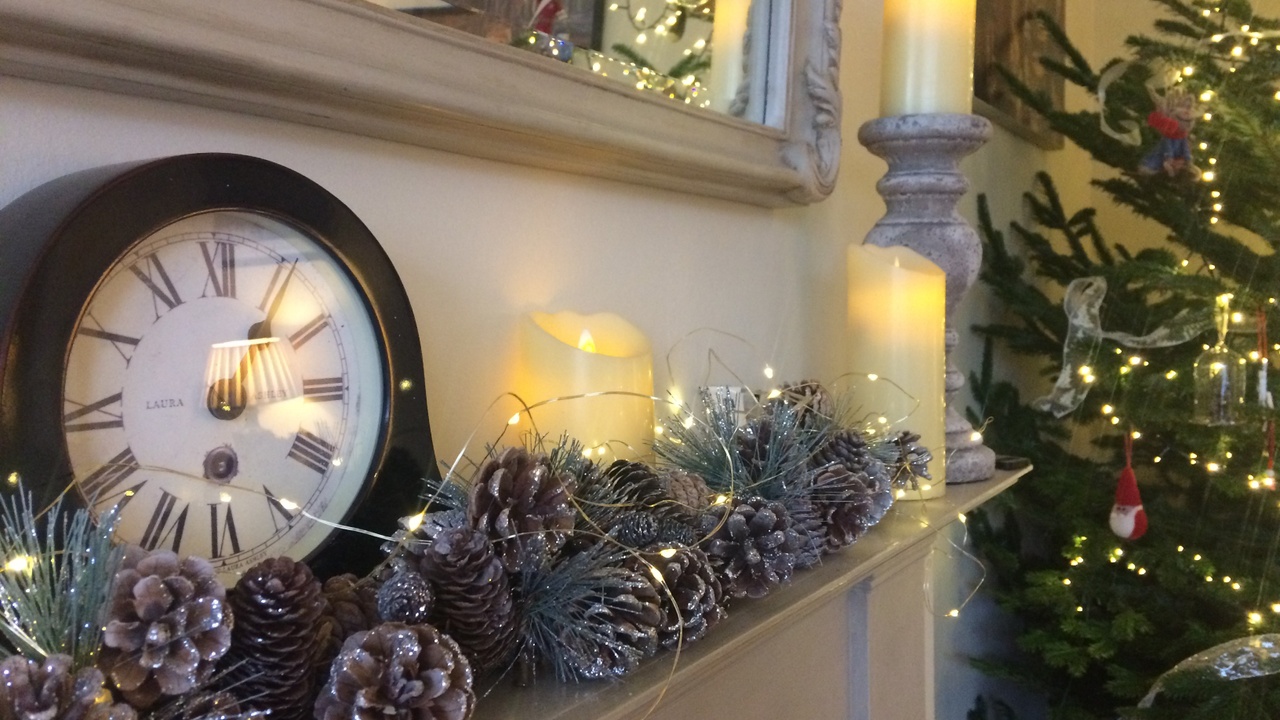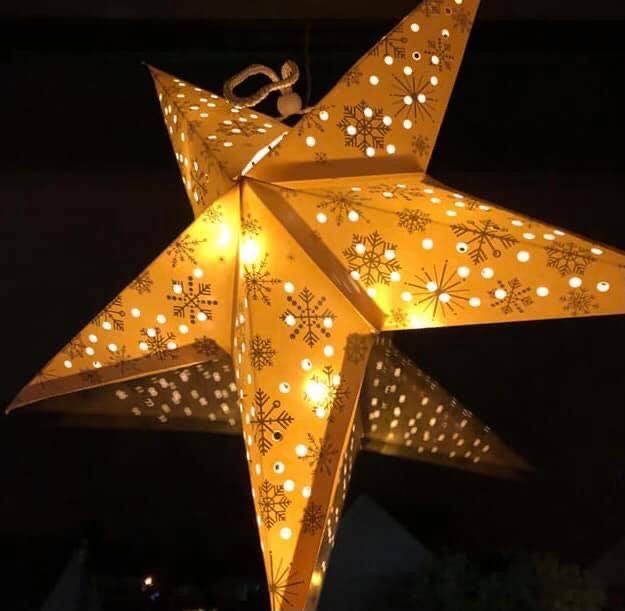Blog
“Strive to make everyday the best day of your life, because there is no good reason not to.” Hal Elrod
Open Ended Snow Day Play!
I don't know about you but I just love the snow! Waking up and seeing the snow flakes falling brings so much excitement. I also love the softness that we experience when it snows and the way everywhere seems to quiet. Taking a walk and hearing the crunch underfoot, perhaps hearing the tweet of the birds in a nearby tree and noticing the snow sitting carefully on the branches.
I have been very fortunate to go on some wonderful adventures to Northern Finland and Canada and even as an adult the snow has truly fascinated me. Like the way it sticks to the trees in the -10 temperatures! I loved how in Finland the streets were given a cosy glow in the middle of winter with candles dotted in the snow lighting the way. So when it was snowing here in Bradford today I just couldn't wait to bring in some of that joy of snow into our day.
In today's blog I wanted to share three ways you can embrace some open ended snow play this winter.
Set up a snow kitchen
Here we take the good old ...
Transition Back Into Setting
Transition Back Into Setting
For all children Christmas has been a long build up of excitement and the younger the child the harder it is for them to understand that it’s now finished.
My 2 year old is still singing When Santa got Stuck up the Chimney (a song everyone praised him for singing and knowing all the words to last week!) Now he can’t understand why a song he sang only a few days ago doesn’t receive the same response or reaction!
We give Christmas such a long build up (often starting in November) where we sing songs and tell stories that children often don’t understand because they are yet to experience it first hand. Then we’re so quick and eager to clear it all away.
Yet young children need the first hand experience of something to then play and make sense of it all.
I’ve seen lots of posts recently asking people to share their invitations to play for January.
This is your reminder that you don’t need to fill every space with something new.
Leave some space for the ...
5 Simple Nature Inspired Outdoor Winter Activities for Babies

Here at Little Nature Tots we aim to provide inviting invitations for babies to play, explore & investigate.
Within our play we use lots of natural materials which we forage & enhance using other sensory objects.
Our stations are planned and set up to ignite sensory development within the 5 senses: See, Hear, Taste, Smell & Touch.

1. Bauble water play
Fill a tray with water & add different coloured baubles. Then add some fir or pine tree to add colour and texture. Allow your baby to look at, touch, roll & explore the objects in the water.

2. Winter rice play
Fill a tray with rice and add festive objects & colours. Here I also added some sticks to make patterns. Your baby will love to feel the rice with their fingers and toes.
3. Mud kitchen sensory play
Collect crunchy leaves & evergreens from around the garden. Add some small pots and pans. Your baby will love to explore the smells and textures.

4. Winter sensory tray
Using a foil blanket as the base, add a variet...
Supporting Big Feelings at Christmas Time

Finding and embracing nature is a big part of the Scandinavian Day. Friluftsliv (Free air life ) is a Norweigan term all about just taking the time to wander into nature with no agenda but to just be. The Norwegian philosophy around just bonding with nature.
Embracing nature and the benefits it brings not only improves the child’s well-being but also the adults that are outside and joining in too!

While writing this post I reflected back to this time last year when we had a tricky start to the day with some big toddler emotions. We got ready to go outside (which was a challenge in itself with a grumpy toddler and all the layers needed) We eventually headed outside into nature at 7:45am and it was worth all the trickiness of getting ready. We had no agenda, no where in particular to go but just explored where our interests took us. The longer we were outside for the calmer and happier we became. We got lost in the wonders of the sparkly leaves, the crispness under foot and the the ...
Hygge Friday

Guest Post by: Sam Goldsworthy
Since undertaking the Hygge accreditation we have really embraced the feeling of togetherness and cosiness. The one thing that struck a positive chord with us when reading about life in Denmark was the way they come together on a Friday afternoon to enjoy cake and celebrate the end of the week. We thought ‘wow’ we could do easily achieve this in our setting. So we originally planned to bake each Friday morning and come together in the afternoon to enjoy our bakes with a hot chocolate or a warm milk and reflect on the adventures that we have had together during the week.

Our Hygge Friday developed to include ‘voting'. So we would choose two recipes and ensure we had ingredients for both. We placed a picture with each bake with the wording underneath for the children to be able to read or visualise the choices depending on their age and stage of development. They would often ponder then, would choose a bake and write their name under the bake that the...
Winter at our Montessori Preschool Wise Owls

Embracing the concept of Hygge in our Montessori preschool Wise Owls (follow on instagram @wiseowlsmontessori) has been both magical and gratifying. The concept of living in the now and embracing the simple and natural things in life has been wonderful to see first-hand amongst the children. We embrace the sense of togetherness as well as capturing the feeling of nature, warmth and cosiness.
Throughout the year, we love to incorporate materials from our outdoor environment, for example, going on nature walks to collect branches and leaves to make our season tree which is proudly painted and created by the children and displayed in the classroom throughout the year. The children love learning about the different seasons and incorporating nature and hygge into the classroom. Providing natural objects made from wood allow us and the children to feel closer to the simplicity of nature. We have also recently gathered natural materials to make our own Winter Wreaths for our school doors. ...
Hygge Baking with Sarah's Little Stars

Here at Sarah’s Little Stars, we love to bake.
The children love the independence that it brings to their morning or afternoon.
We bake so much that the children can often do most of the steps without asking for an adult’s help.
Watching the children work as part of a team is one of my favourite parts of our week. Someone might say “me do eggs” and an older child might say “there’s 4 eggs xxxx, so we can we all have a turn!” And the little one is then seen counting the eggs and shouting “Yes”- the excitement on their face is just priceless.
From time to time the children will often give me or my assistant Claire a job todo, “can you clean this up Claire?”, “Sarah, is the oven on?”, “Claire can you help xxxx put the flour in whilst I’m stirring?”
They might not be the most exciting jobs in the kitchen that morning or afternoon but its just lovely that they want to involve us in their baking.

Baking covers a range of skills
- Risky play ( using the oven/whisk/grating tools/ k...
"I sit by the window with a warm drink, looking out and watching for those first few flakes of snow to fall"

By Emma Thackray
I have always had Hygge embedded deep within me, I just never knew the name for it or how to describe it, other than “a love of being cosy”.
My husband finds it amusing that in the winter months when snow is forecast, I sit by the window with a warm drink, looking out and watching for those first few flakes of snow to fall. The excitement in me rises as more snow falls. There’s just something so cosy about being in your nice warm house watching the snow lay outside isn’t there.
Autumn and Winter have always been my favourite seasons, with a particular love of Halloween and Christmas, as that’s when I really feel cosy, calm and relaxed.
However, since embarking on the Hygge in the Early Years Accreditation I have come to the realisation that Hygge can be experienced at any time of the year. It’s not all about the weather outside, it’s about the environment you create and the calm that you bring into your home and life.
I am therefore transforming my home, wh...
Winter Child Led Play With Loose Parts

What is a tinker tray?
Tinker trays are filled with open ended loose part materials that will spark curiosity, problem solving, critical thinking and imaginative play. The objects in the tray can be used in any way the child chooses and there is no set way that they should be used. It is commonly used in the Reggio Emilia Approach to learning and can be adapted for a range of different ages and stages of development.
Materials for a tinker tray
Any tray with compartments can be used to display and store the loose parts to be used in play. I quite like using trays made out of natural materials like wood and seagrass as i always think we can display our materials in a beautiful way in these. Here are some ideas of what you could use or re-use:
- A cutlery tray insert
- A chocolate box or biscuit box insert
- Bun trays
- Tie box
- Jewellery tray insert
- Desk drawer dividers
- Tool boxes
- Crafting boxes
- Ice cube trays
- A tea bag caddy
Items ideas for your tinker tray:
We can creat...
Bringing Hygge To Your Home This Christmas

Hygge is all about embracing the simple moments in life with such warmth and comfort. Winter time offers us the perfect opportunity to make some seasonal changes to our home to create a calming and warm atmosphere. Getting that hygge feeling in our home is especially important when Christmas time can at times feel quite busy and chaotic with so much going on.
Here are my top tips for bringing some hygge into your home at this time of year.
Consider lighting
Turn off the overhead lights and instead be more creative with the way you light up your spaces inside. Go for lamps on tables, the warm flicker of a candle dancing , light the fire or adda string of fairy lights to jam jars to give twinkle of magic.
Some of the things that I loved seeing in Scandinavia were the lanterns filled with fairy lights on a porch creating a warm welcome to visitors. Or the paper stars hung in the windows to light the way on a dark night. It it snows you could even have a go at making some snow lant...










